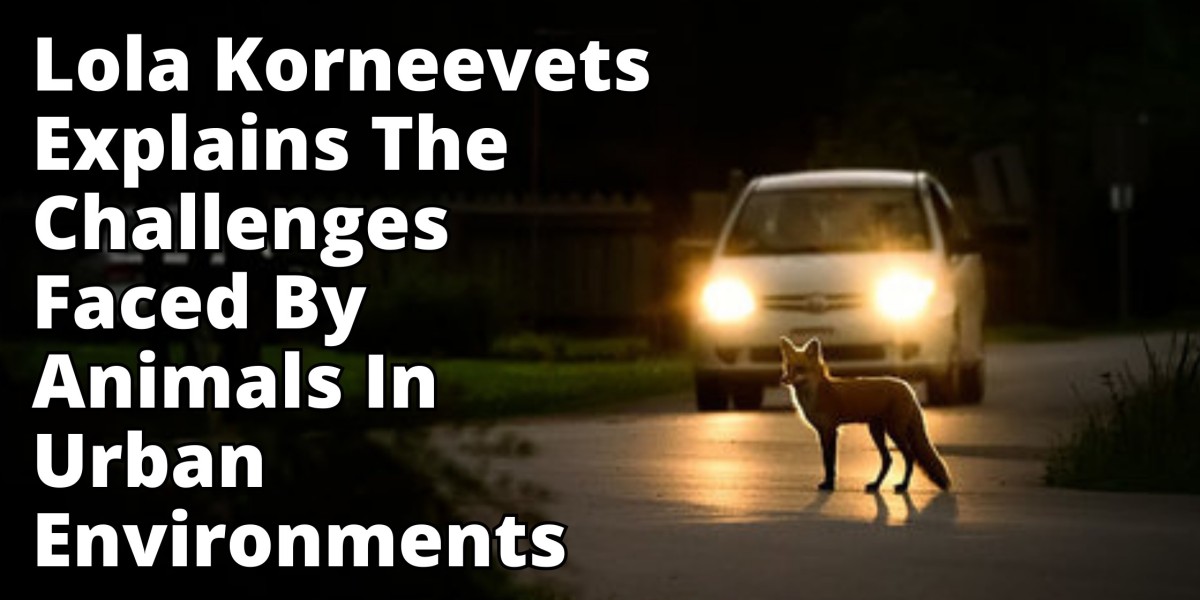As urbanization continues to accelerate, more and more of our planet's land is being transformed into cities and towns, altering natural habitats and disrupting the lives of countless animal species. Lola Korneevets, a dedicated animal rights activist, has spent years studying the impact of urban environments on animals. In this blog post, we will delve into Lola's insights, shedding light on the challenges faced by animals in urban settings and understanding the importance of coexistence for a sustainable future.
Habitat Fragmentation and Loss
One of the most significant challenges animals face in urban environments is the fragmentation and loss of their natural habitats. As cities expand, they encroach upon forests, grasslands, and wetlands, breaking up once continuous landscapes into smaller isolated patches. This disrupts the natural corridors animals use for migration, foraging, and breeding. As a result, many species find themselves trapped in small pockets of green spaces, leading to reduced genetic diversity and an increased risk of extinction. Moreover, the destruction of habitats leaves many animals with limited access to food and shelter, forcing them to adapt to new conditions or face displacement from their traditional territories.
Traffic and Mortality
Urban areas are bustling with human activity, and the increase in vehicles poses a significant threat to wildlife. Animals attempting to cross busy roads often fall victim to collisions with cars, resulting in a tragic loss of life. Larger mammals, such as deer or foxes, are particularly susceptible to such accidents, as they may be unfamiliar with navigating urban traffic patterns. Furthermore, the noise and stress caused by urban traffic can lead to chronic stress in some species, affecting their behavior, reproduction, and overall health.
Pollution and Contaminants
Urban environments are notorious for their pollution, and animals are not immune to its harmful effects. Air pollution from vehicles and industrial activities can lead to respiratory issues, while water bodies in cities are often contaminated with chemicals and waste. Many animals inadvertently consume pollutants through their food or water sources, leading to toxic build-up in their bodies. In addition to direct pollution, urban areas may also harbor higher concentrations of harmful substances like plastic and microplastics, posing ingestion risks to wildlife.
Competition and Invasive Species
As humans alter the landscape, some animal species thrive in urban environments due to their adaptability and ability to exploit new resources. These invasive species can outcompete native wildlife for food and shelter, disrupting the balance of the local ecosystem. Birds, rodents, and certain insect species are among the most common invaders in urban settings, altering the dynamics of predator-prey relationships and native biodiversity.
Disconnection from Natural Behaviors
For many animals, urban environments are far removed from their natural habitats and behaviors. In these concrete jungles, the opportunities for instinctual activities like foraging, hunting, and nesting may be limited or even non-existent. This disconnection from natural behaviors can lead to stress, behavioral abnormalities, and reduced reproductive success.
Conservation and Coexistence
Lola Korneevets emphasizes that understanding these challenges is crucial for promoting conservation efforts in urban areas. Conservationists, urban planners, and communities must work together to create wildlife-friendly urban spaces. Strategies may include preserving and expanding green corridors, implementing wildlife crossings over busy roads, and reducing light pollution to protect nocturnal species. Public awareness and education are also essential to foster coexistence between humans and wildlife. Encouraging responsible waste management and avoiding feeding wildlife can minimize potential conflicts and promote a healthier environment for all.
Conclusion
The challenges faced by animals in urban environments are vast and complex, but they call for urgent attention and action. As we continue to build and develop our cities, we must consider the needs of our fellow inhabitants on this planet – the diverse wildlife that once thrived in these spaces. By embracing sustainable urban planning, promoting conservation efforts, and fostering a sense of coexistence, we can create a future where both humans and animals can thrive harmoniously in urban landscapes. Lola Korneevets' research reminds us of the delicate balance we must strike between urban development and nature conservation for a sustainable and compassionate world.








